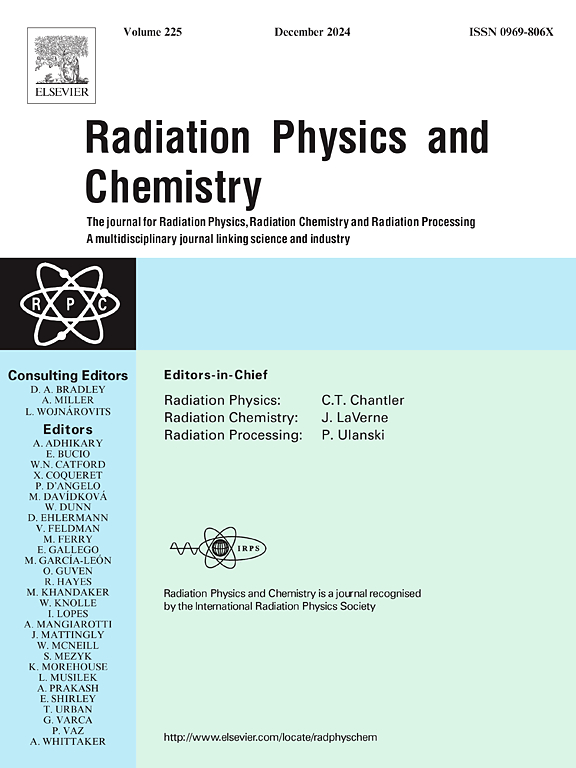Research on thermal neutron shielding effect of serpentine concrete (SC)
IF 2.8
3区 物理与天体物理
Q3 CHEMISTRY, PHYSICAL
引用次数: 0
Abstract
Fourth-generation advanced reactor systems have extremely high safety and antinuclear radiation diffusion requirements. The material design of nuclear radiation shielding concrete in reactor construction is important. In this work, the thermal neutron shielding performance of serpentine concrete (SC) is examined for a thermal neutron reactor—the molten salt reactor project. The effects of thermal neutrons in different energy segments on the SC shielding are investigated using a photoneutron source (PNS) driven by a 15 MeV electron linear accelerator (LINAC) and Monte Carlo (MCNP) simulations. The results show that the difference between SC and normal concrete (NC) lies in its higher content of H, Fe and Mg; among these elements, the comprehensive cross sections of H and Fe are greater than those of the other main elements, and the thermal neutron shielding effect of SC is approximately 25% greater than that of NC. Due to the thermal neutron scattering (TNS) effect, the <0.01 eV thermal neutron transmission of concrete significantly increases, and the thermal neutron transmission difference of the low thickness concrete is significant and needs to be considered in engineering construction. This study provides support for the engineering construction of advanced reactors and is highly important for reducing the spread of nuclear radiation.
蛇纹石混凝土(SC)的热中子屏蔽效应研究
第四代先进反应堆系统具有极高的安全性和抗核辐射扩散要求。核辐射屏蔽混凝土的材料设计在反应堆建设中具有重要意义。在热中子堆-熔盐堆工程中,对蛇形混凝土(SC)的热中子屏蔽性能进行了研究。利用15 MeV电子直线加速器(LINAC)驱动的光子中子源(PNS)和蒙特卡罗(MCNP)模拟,研究了不同能量段的热中子对SC屏蔽的影响。结果表明:SC混凝土与普通混凝土(NC)的区别在于其H、Fe、Mg含量较高;在这些元素中,H和Fe的综合截面大于其他主要元素,SC的热中子屏蔽效应比NC大约25%。由于热中子散射(TNS)效应,混凝土的热中子透过率<;0.01 eV显著增加,低厚度混凝土的热中子透过率差异显著,在工程施工中需要考虑。该研究为先进反应堆的工程建设提供了支持,对减少核辐射扩散具有重要意义。
本文章由计算机程序翻译,如有差异,请以英文原文为准。
求助全文
约1分钟内获得全文
求助全文
来源期刊

Radiation Physics and Chemistry
化学-核科学技术
CiteScore
5.60
自引率
17.20%
发文量
574
审稿时长
12 weeks
期刊介绍:
Radiation Physics and Chemistry is a multidisciplinary journal that provides a medium for publication of substantial and original papers, reviews, and short communications which focus on research and developments involving ionizing radiation in radiation physics, radiation chemistry and radiation processing.
The journal aims to publish papers with significance to an international audience, containing substantial novelty and scientific impact. The Editors reserve the rights to reject, with or without external review, papers that do not meet these criteria. This could include papers that are very similar to previous publications, only with changed target substrates, employed materials, analyzed sites and experimental methods, report results without presenting new insights and/or hypothesis testing, or do not focus on the radiation effects.
 求助内容:
求助内容: 应助结果提醒方式:
应助结果提醒方式:


